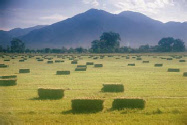


Biologicals in the soil
Let’s explore the importance of the Biological Aspects of the Soil System
(“Biological Aspects of the Soil System” unknown author”)
The cycles that permit nutrients to flow from soil to plant are interdependent and proceed only with help of the soil community. Soil microorganisms are the key link between mineral resources and plant growth. Soils contain five major groups of microorganisms: bacteria, actinomycetes, fungi, algae and protozoa.
The bacteria are most prominent because of the many different populations in a given soil, and are the most abundant group. They are usually more numerous than the other four combined. Although the other groups carry out many changes, similar to those of bacteria, the bacteria stands out because of their capacity for rapid growth and fast decomposition of many natural materials.
Bacteria from soil can be placed in two broad divisions: The indigenous species, that are true native residents, and the invaders. The indigenous types may have resistant stages and endure for long periods without being metabolically active. At the same time, however, these natives multiply and participate in the biochemical functions of the community. In contrast invader species do not participate in any important way in community activities. They enter the soil system with rain, disease tissues, animal waste or sewage sludge. They may persist for some time in a resting state and sometimes even grow for short periods. Never do they contribute measurably to the various ecologically significant transformations or interactions.
Bacteria flourish dramatically when rapidly available nutrients are added to the soil. These actively metabolizing bacteria need nutrients provided from outside sources for their rapid growth, but the supply is quickly exhausted. Bacteria respond promptly to soil amendments and become, and remain, numerous as long as the nutrients are available. They decline once the food source if deleted.
Environmental conditions affect the density and composition of the bacterial flora. The primary environmental variables that influence soil bacteria include moisture, aeration, temperature, organic matter, pH and inorganic nutrient supply. Highly acidic or alkaline conditions inhibit many common bacteria. The optimum pH range for most species is about 6.4 to 6.8. Generally, the greater the hydrogen ion concentrations, (the higher the acidity) the smaller the size of the bacterial community.




BACTIFEED 2010 © Southwest BioAg 2010 480-772-2425
Bacteria and fungi play an essential role in decomposition, but they are also crucial to life on earth because of their exclusive ability to perform key biochemical changes:
1. Nitrification: Changes ammonia, a product of decomposition, into a form of nitrate used by plants.
2. Sulfur oxidation: Sulfur is oxidized and made usable to plants through the sulfur cycle, which is similar to the nitrification cycle.
3. Nitrogen fixation: Introduces atmospheric nitrogen into the food chain.
4. Mycorrhizal association: Fungal penetration of plant roots increases nutrient uptake.
Microbial activity is important in producing soil structure changes and stability in four ways:
1. Filaments of microbial tissue form a network throughout soil mineral particles.
2. Certain soil organisms produce polysaccharide, (complex sugars), that have a mucilaginous nature and cement mineral particles together. This results in up to 40% improved erosion stability in some soils.
3. Other non-polysaccharide microbial produced binders for reducing erosion and leaching include lignin and humic substances.
4. Deposition of organic matter, that strengthens clay particle bonding and assists in aggregation, makes the soil particles into water-soluble units.
The benefits of this soil structuring also includes plant root growth, adequate aeration and improved nutrient holding ability. Microbial transformation of elements, such as nitrogen, carbon, phosphorus, sulfur, iron, potassium, manganese, selenium, zinc and copper, occur in the soil system on a regular basis. Bacteria and fungi also control diseases of plants and soils in various ways such as:
- Suppression (Production of antibiotics)
- Competition (Striving for the same object)
- Antagonism (Active opposition)
- Predator (Plunders or kills)
The BACTIFEED ST Soil System focuses first on the biological, organic and nutrient value of your soil. As we build this vital soil structure we have found that most other problems go away and plant health and growth improve.
What we do is not new. Farmers have been incorporating biological or organic practices into their farming for years. The most common is the application of manure. However, there have been many products developed that will stimulate the biological activity of the soil or apply one form of organic acid or another. They require one or two applications a year for at least two to three years before experiencing cost effective results and many times are not easy to apply.
After working with many of these products over the last 15 years we saw many promising results produced in varying degrees with each of them. At the request of several of our farmers we took on the challenge of combining what we had learned over the years and developed a system that would produce faster results, address most soil problems and were easy to apply. The results are the BACTIFEED ST Soil System, a program that produces hundreds of gallons of biological and nutrient rich liquid every week that will go out with every irrigation.
In building the soil we start with five specific soil microorganisms that have been identified over the last 30 years to be common in all healthy soil. Prior to implementing these organisms into our products each strain has been put through various tests. These tests include many chemicals, various temperatures, oxygen and pH, to filter out the stronger, more chemical resistant organisms from the others. After putting together a strong biological package we developed a feed package that includes essential elements that are in the soil and needed to form strong, healthy plant growth.
These two packages are combined on a weekly basis, in an enclosed tank, to produce hundreds of gallons of biological rich liquid a day. These organisms are cultivated on essential nutrients. As these organisms are introduced into your irrigation, then carried into the soil, they continue to reproduce, produce enzymes and biologically break down the nutrients in the soil making them available for plant uptake. They also produce organic acids that will improve the soil ability to take and hold water and nutrients.